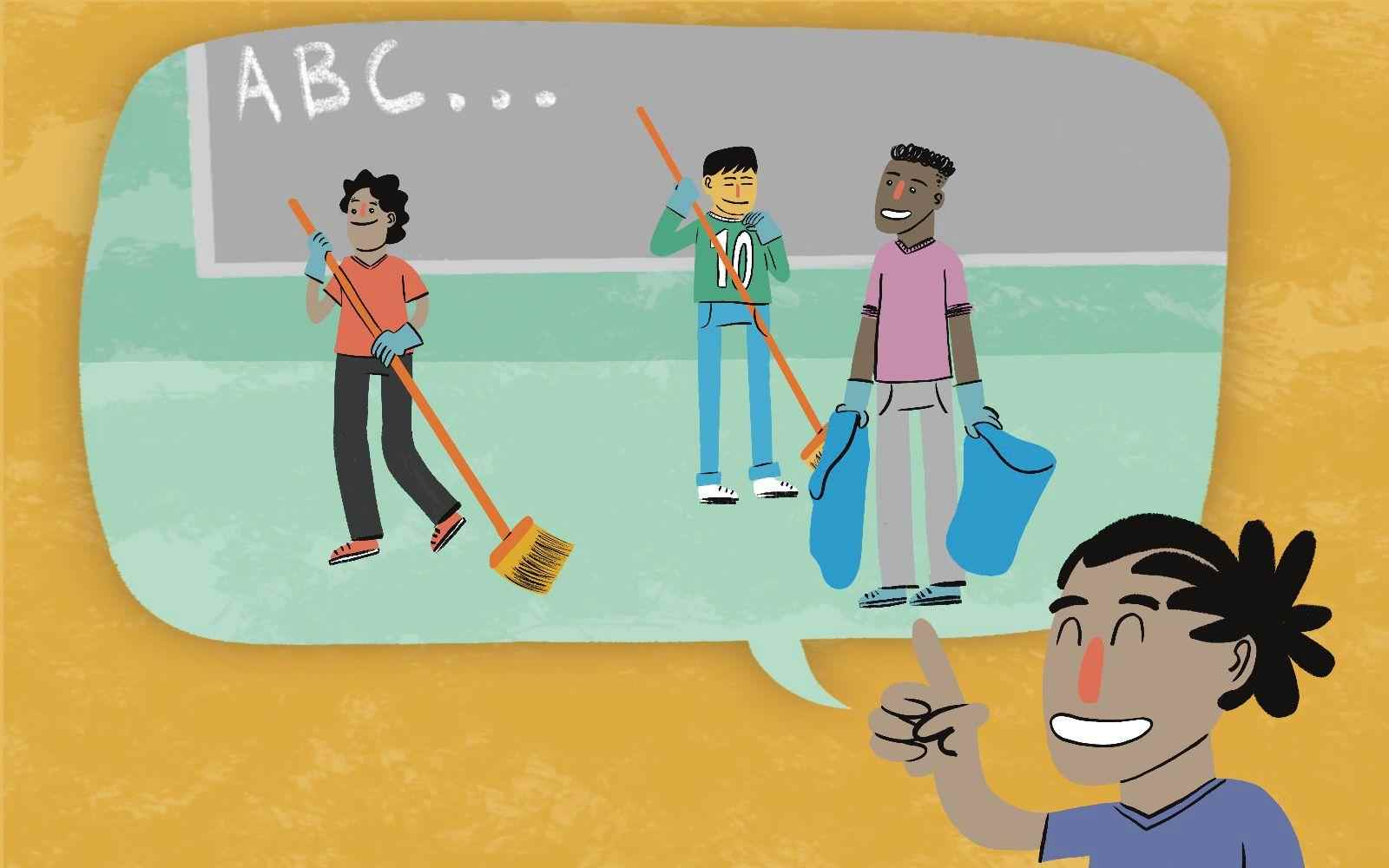From Trash to Triumph: Students Turning Waste into Change
Join Hartran's students on a transformative journey as they turn classroom lessons into impactful change. From boosting reading fluency to addressing school cleanliness and advocating for environmental causes, witness young minds becoming powerful agents of positive change.

Hartran's journey as an educator spans over two decades and currently embraces the diversity of grades from second to fifth in a school of a thousand students. It's in this environment that she has discovered the profound potential of changemaking even within the youngest students.
Hartran believes that understanding current events and fostering a proactive approach to change are pivotal aspects of education. She's a firm believer that young students can understand and influence their surroundings more than we might think: “You'd be surprised how much these students would understand and drive initiatives to make things better,” she shares with conviction. The trend of engaging students in real-world issues has gained momentum. As she shares, “that's a trend now, to have students thinking, changing their mindset, and also changing their parents. They see that if they want to better themselves, they need to have this mindset change.” The Time for Change program has been instrumental in Hartran's mission. It acts as a catalyst for transformative learning across multiple subjects, incrementing reading and writing to promote personal growth. A remarkable instance of this growth revolves around improving reading fluency. Some students struggled with foundational skills, such as sounding out words. Hartran noticed that becoming aware of their shortcomings engaged them. “From that awareness, they improve themselves,” she states.
However, the program's influence extends far beyond the classroom walls. It inspired students to tackle challenges within the school environment. Hartran narrates how she asked her students to identify a topic they felt strongly about in their school, that could be improved. The students pointed out the matter of cleanliness of some school spaces. Together they planned what could be done to address that problem, what materials would be needed and what time they could spare for that task. Hartran provided them with trash bags and gloves and a small group of students got started with trash collection around the classroom. Soon the group expanded, and they started covering other areas of the school. Empowered by the program, they united to address this problem, identifying solutions that involved the entire student body. “They made that change, and they realized the impact they had at the school ,” Hartran proudly shares.
This initiative, born from empathy and compassion, has brought tangible changes to the school environment and beyond. The program has fostered a sense of responsibility and proactiveness. Parents of the students have pointed out how their children are now cleaning after themselves at home. For Hartran it’s about empathy and socioemotional skills, understanding how we feel in a school or a house that is dirty and understanding what we can do about it. From there, critical thinking helps brainstorming solutions, and working together they can choose the most efficient and respectful course of action to all. “They're learning how to work together, and that is part of what Time for Change is all about – having that empathy and learning to cooperate,” Hartran asserts. They are thinking of amplifying this initiative next year, involving more students and covering a larger school area.
Additionally, the program has served as a platform for other initiatives. Hartran recounts her students’ involvement in the free library she initiated in the school, where people could bring and get books freely. Her students were keen on bringing more books and helping the initiative become known to all. Students also engaged in a project focused on preserving nature and indigenous culture. Inspired by a group of Native American high school students making a difference in their community, Hartran guided her students to use Minecraft Education to brainstorm solutions that could benefit native environments.
In the heart of Hartran's narrative lies a belief that every small action, every change, contributes to a bigger picture. “Starting them young to get them learning, having this growth mindset rather than a set mindset where they think that they are helpless… will lead them to bigger things,” she says. Hartran's story is a testament to the potential teachers have to collaborate with their students inspiring them to become agents of positive change.